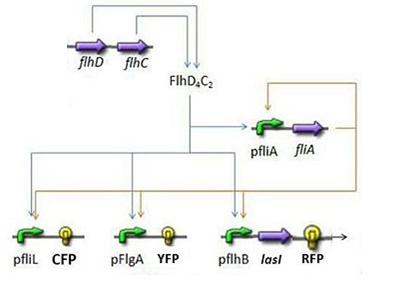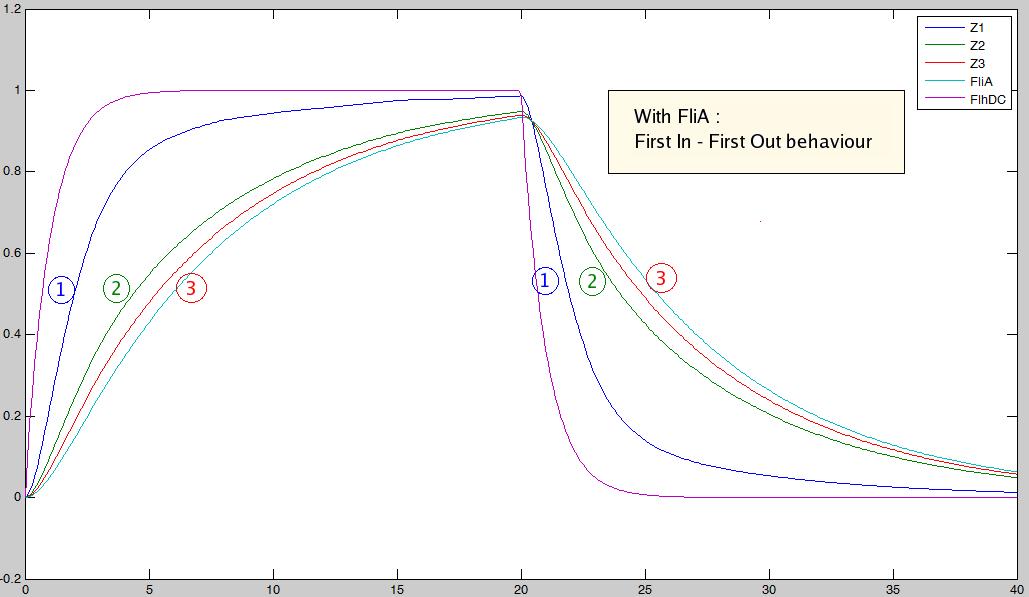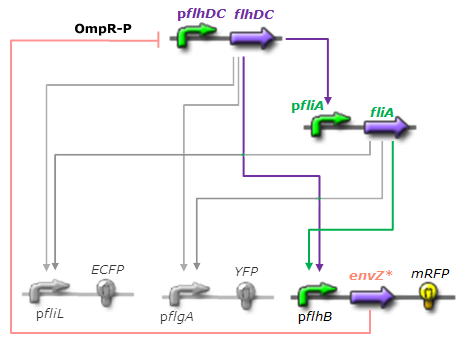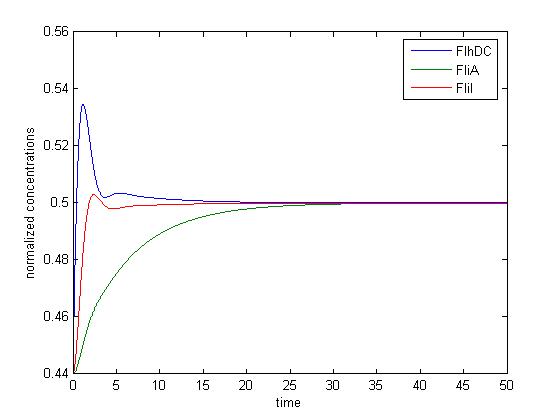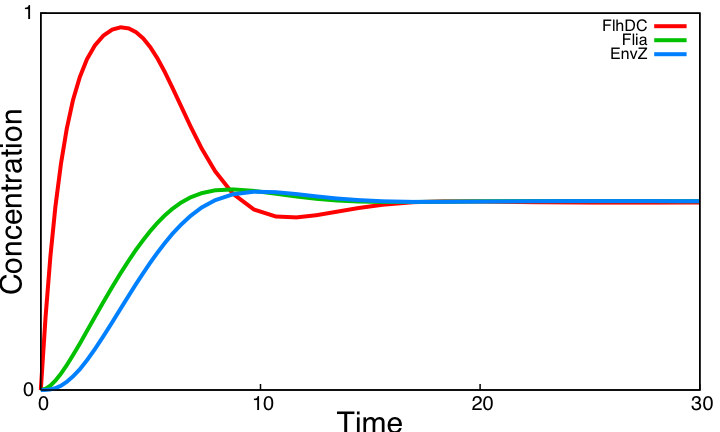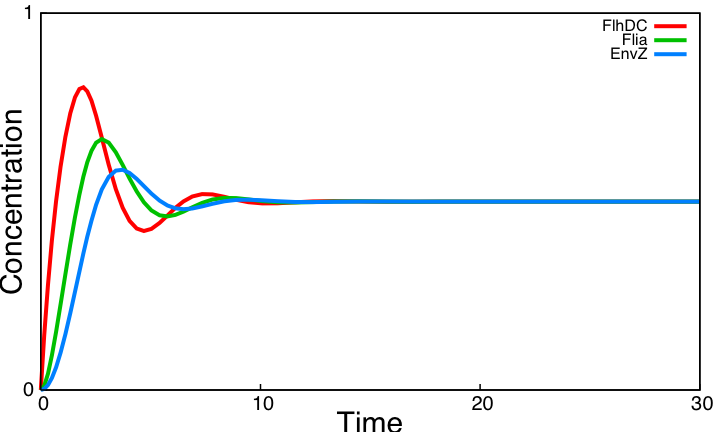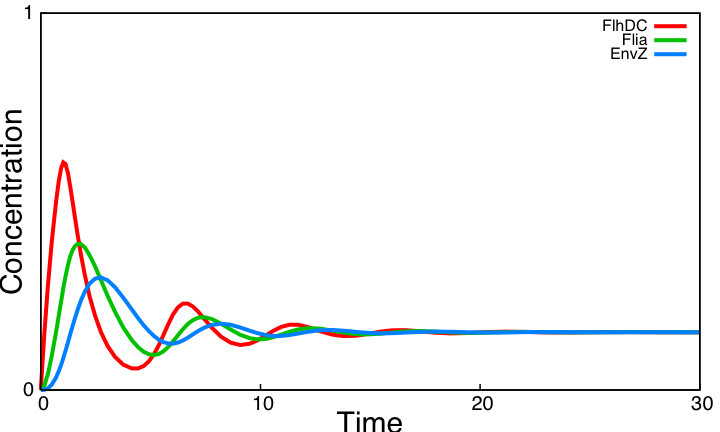Team:Paris/Analysis
From 2008.igem.org
|
Network Analysis
After having designed the specific genetic networks corresponding to the different parts of our project, we have analysed them through modeling. Therefore, you will find in this page the principal results coming from the models, as well as some resulting simulations. Améliorer l'a rédaction, suggestion: This page presents the principal results of the analysis and simulation of the theoretical models of the FIFO and the oscillator circuit of our project..
FIFO behaviourPlus factuel. Ce n'est pas intéressant de dire... nous avons dessiné un mod!èle blab bla bla. Dites directement,... voici le modèle qui correspond à ... We have designed a model corresponding to the genetic network and we have obtained the following results : The FIFO circuit is made of a main regulator (FlhDC) that activates an intermediary regulator (FliA) and the three output genes Z1, Z2, and Z3 that are activated by the combined effect of the two regulators.
The parameters found in the papers we have used directly lead to FIFO behaviour ! The simulation on the right, based on parameter values found in REFERENCE A DONNER directly repoduced a FIFO behaviour: the output genes are inactivated in the same order they are activated. To go further into : OscillationsSame comment do not tell your history, go to the facts Then, we have simulated the FIFO with a negative feedback, in order to observe oscillations. We have obtained the following results : The first attempt for an oscillation circuit is implemented as a simple negative feedback loop connecting one output of the FIFO circuit to the input regulator.
In the simulations above performed with parameters from the literature (REFERENCES) : the system reaches a steady state and is far from oscillating ! Based on the same theoretical model, we investigated which variation of our basic circuit could change its stability and could suggest changes on the circuit to be implemented biologically to generate oscillations. These modifications consited for instance in changing COMPLETER je ne comprends pas les graphes ci dessous: que veut dire Reducing EnvZ---> FlhDC etc... From the simulations performed with parameters found in the literature we conclude that the system reaches a steady state and is far from oscillating ! We study the role of each interaction of the core system. For instance, which variation of the core system circuit could change its stability and could suggest changes on the circuit to be implemented biologically to generate oscillations. After several modifications, no oscilating configuration was found out of the core system. This is shown in the following figure: Moreover, a mathematical analyis confirmed that the core system can not produce oscillations.
</center> Want to know more about :
System ImprovementsBasically, we had to explore other possibilities to obtain oscillations. After just trying to tune the parameters, we have decided to add a supplementary delay in the system, in order to allow oscillations to appear. Thus we have decided to use Quorum sensing mechanisms that will bring both this needed delay and a synchronization among the population. -*-*-*-*-*-*-*-*-> Ici une figure pour illustrer les oscillations du système complet <-*-*-*-*-*-*-*-* All the details can be found here :
|
 "
"

